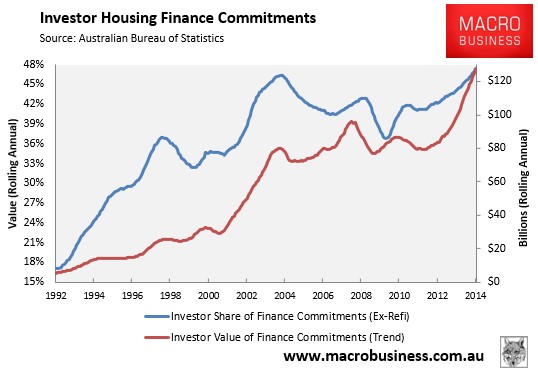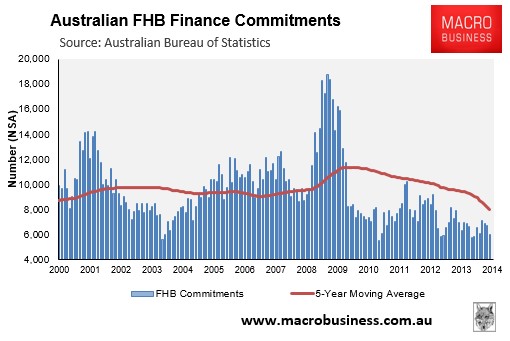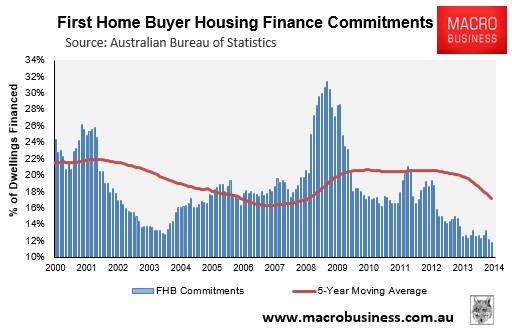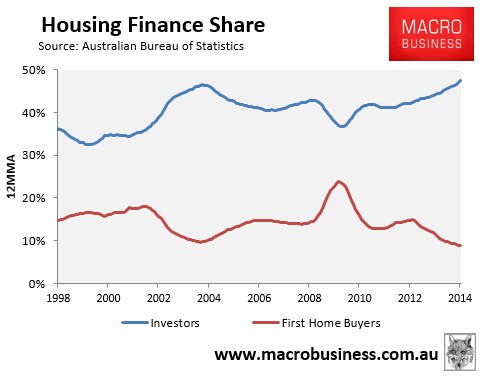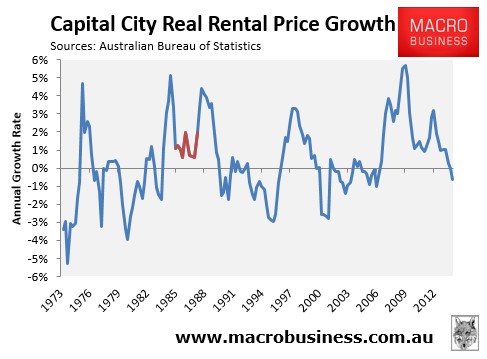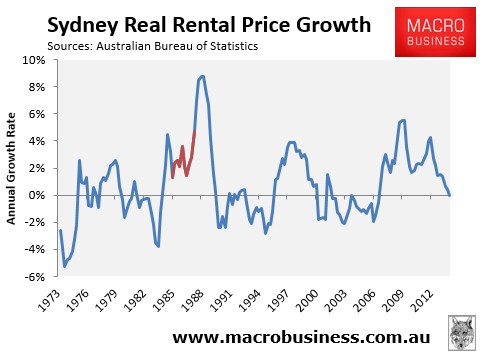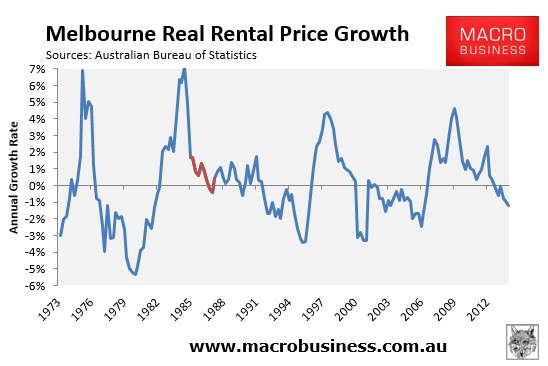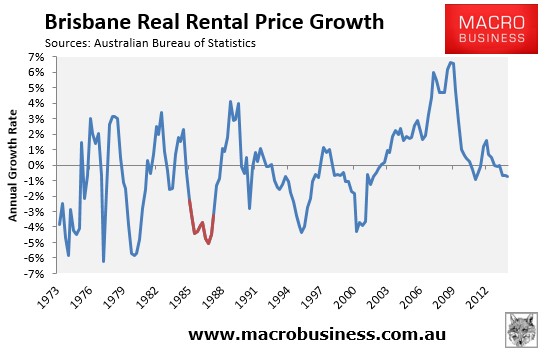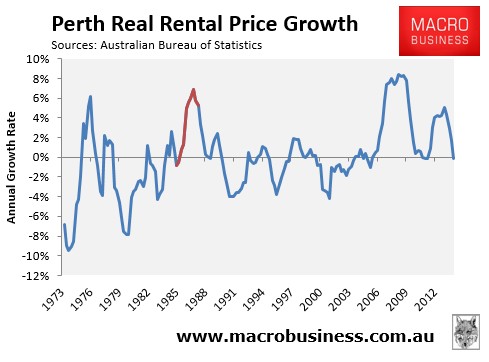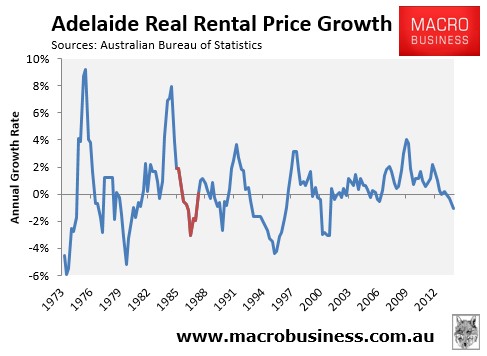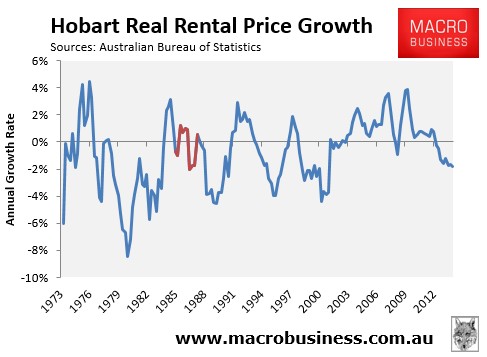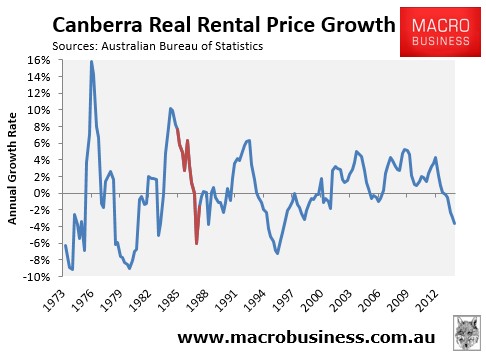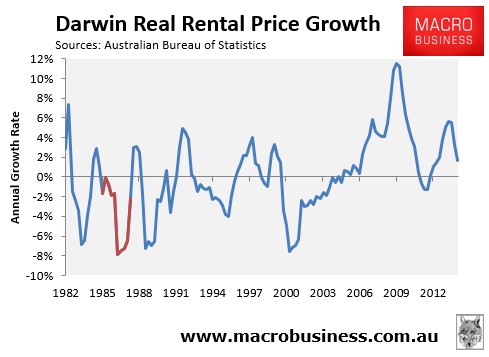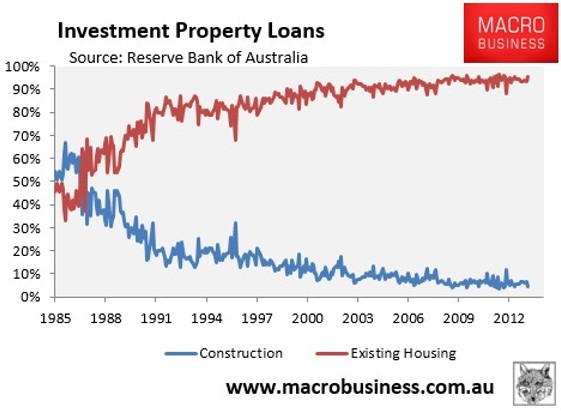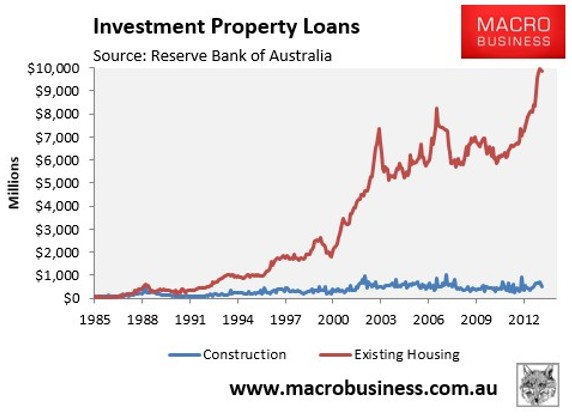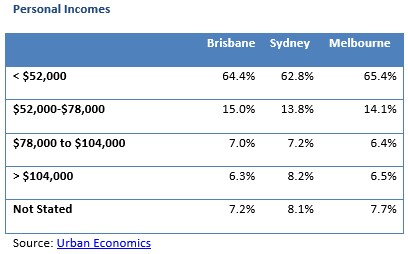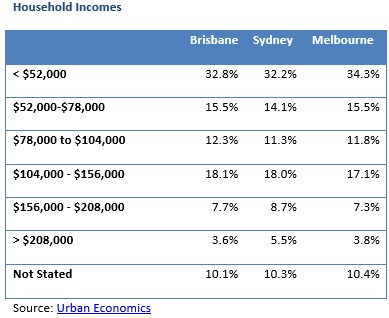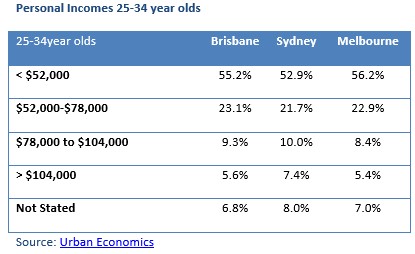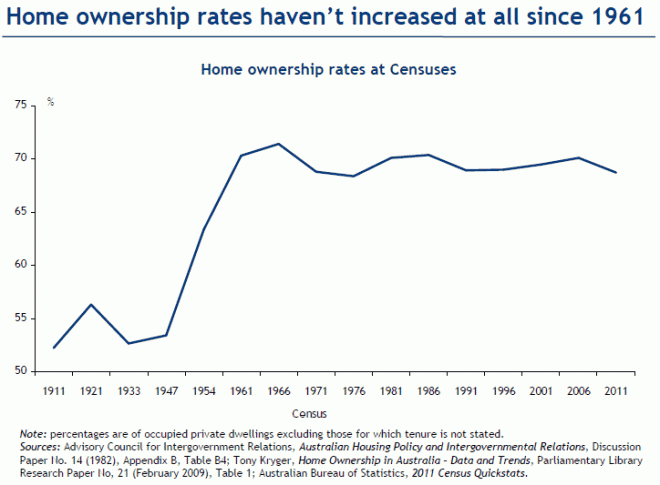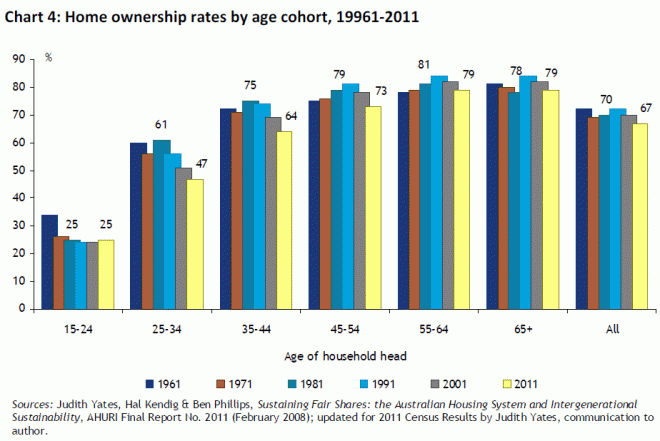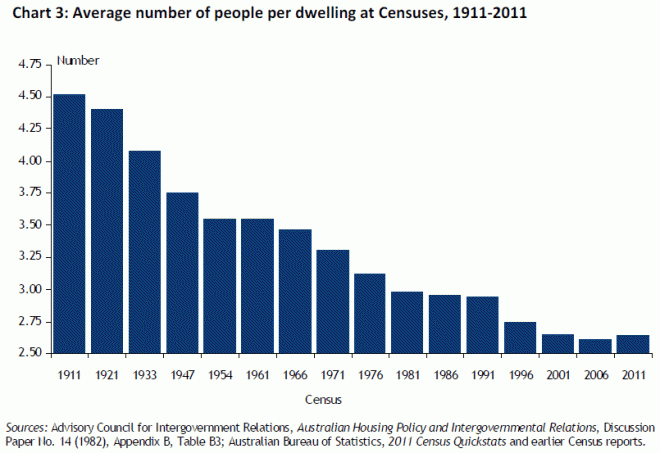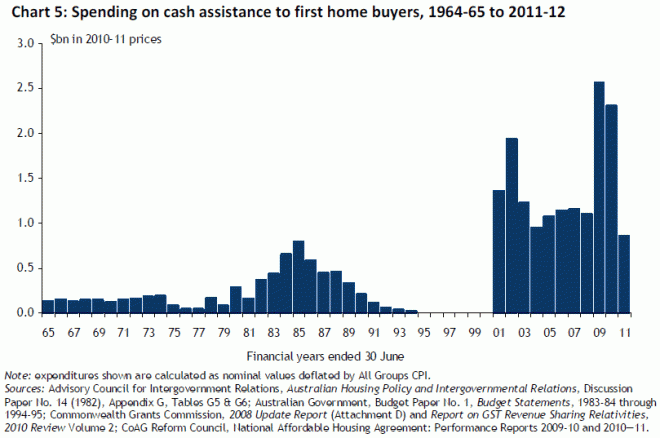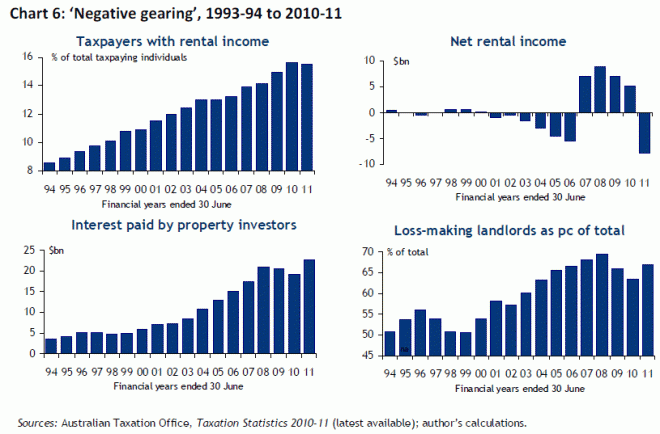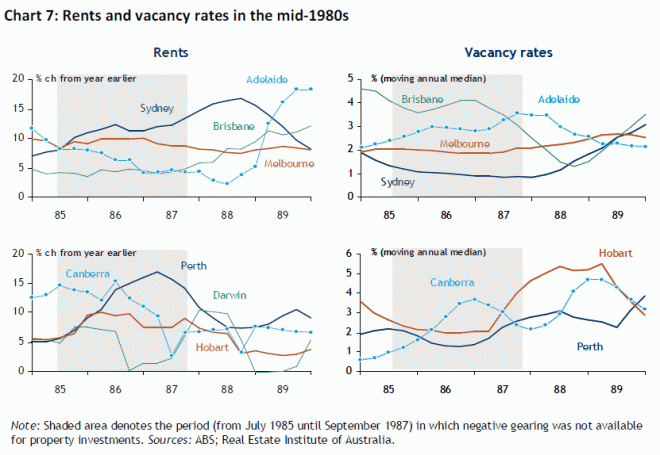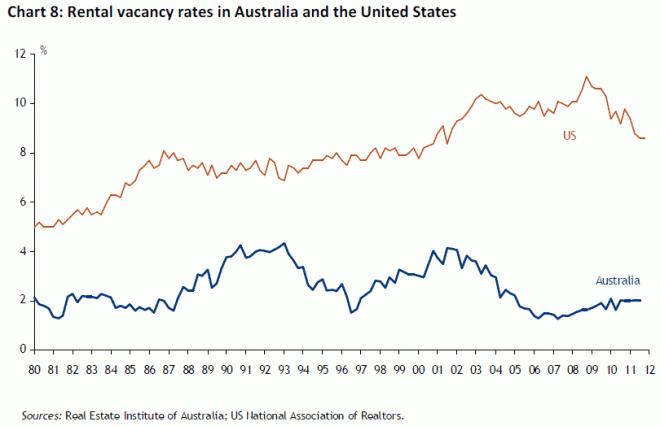So often we are told by "PROPERTY SPRUIKERS" house prices will "HAVE" to go up because we are not building anywhere near enough housing to keep up with demand & because of their "PERCEIVED" shortage house prices will keep rising as people have to have somewhere to live.
Gullible "Mum & Dad" PROPERTY SPECULATORS swallow this MANTRA dished out by these "PROPERTY SPRUIKERS" & continue to pay top prices for WA housing thinking that the shortages are real.
Gullible Mum & Dad property Speculators rely solely on strong "Capital Growth" to offset negative rental returns. They believe the necessary "Capital Growth" they need for their Speculative Property Investment to work are there because there is a shortage of housing in WA but the reality is in fact very different.
You only have to attend any Property Seminar to hear Property Spruikers go on & on about how big a shortage there is & therefore Capital Growths are guaranteed.
Below is a chart from www.macrobusiness.com.au that I borrowed to demonstrate that there is no shortage of property in WA & that in the last 30 years we have been building mor than enough to meet demand. In fact we built a SURPLUS of housing during this 30 year period.
(Note: I added the Grid lines to their chart to make it easier to follow)
The chart shows ABS Statistics on WA Housing Starts V's Population growth & the outcome might surprise some.
Further down I have broken down Population increase Vs Housing Completions by years
(Note: my comparisons were with actual housing completion numbers & not just approval/planning numbers)
The years that I have compared (Every second year because that was easy to follow on the chart) shows that in only 4 out of the 17 years compared was there a shortfall in housing starts to population growth & one year where we built the exact amount of housing to match population growth.
Now in the 17 years compared below taking away surplus from shortfall in WA we find that we built a 48,110 surplus of homes over & above what would be dictated by population growth.
Now if you break it down to all the years over this period from the actual ABS Data you would find that in WA we have built 107,113 housing properties over & above demand based on population growth over this 30 year period.
So summing up if you look at the real ABS Data on WA Housing Builds Vs Population growth numbers you will find that in the last 30 years we have in fact built 107,113 homes over & above demand.
So I wish Property Spruikers & Speculators the Best of Luck with your dreams of Capital Growths based on any shortages driving prices up.
Australian Census data has shown that on average over the last 30 years there has been 2.5 people per household.
In fact this number has been growing in recent years, because of the high cost of housing & rents, people have either been living at home with their parents longer or sharing longer with friends.Sharing or renting out a spare to friends has also become an economic necessity for many FHB just to enter the housing market. But for the sake of this exercise lets use the long term average of 2.5 people per household.
With this in mind it would stand to reason that if the West Australian population increased by 25,000 people in a year we would need to build 10,000 new houses / units / apartments etc etc to accommodate this increased population.
1985 Population up 28,000 Homes built 18,000 enough to house 45,000 so we have a surplus of 6,800 Homes
1986 Population up 40,000 Homes built 16,000 enough to house 40,000 so we have a balanced supply & demand.
1988 Population up 45,000 Homes built 16,250 enough to house 40,625 so we have a shortfall of 1,750 Homes
1990 Population up 28,000 Homes built 20,000 enough to house 50,000 so we have a surplus of 8,800 Homes
1992 Population up 21,000 Homes built 16,000 enough to house 40,000 so we have a surplus of 7,600 Homes
1994 Population up 28,000 Homes built 23,000 enough to house 57,500 so we have a surplus of 11,800 Homes
1996 Population up 33,000 Homes built 15,000 enough to house 37,5000 so we have a surplus of 1,800 Homes
1998 Population up 29,000 Homes built 17,000 enough to house 42,500 so we have a surplus of 5,400 Homes
2000 Population up 27,000 Homes built 20,500 enough to house 51,250 so we have a surplus of 9,700 Homes
2002 Population up 21,000 Homes built 18,000 enough to house 45,000 so we have a surplus of 9,600 Homes
2004 Population up 28,000 Homes built 19,000 enough to house 47,5000 so we have a surplus of 7,800 Homes
2006 Population up 45,000 Homes built 23,000 enough to house 57,500 so we have a surplus of 5,000 Homes
2008 Population up 75,000 Homes built 22,000 enough to house 55,000 so we have a shortfall of 8,000 Homes
2010 Population up 55,000 Homes built 22,500 enough to house 56,250 so we have a surplus of 660 Homes
2012 Population up 89,000 Homes built 20,000 enough to house 50,000 so we have a shortage of 15,600 Homes
2013 Population up 65,000 Homes built 24,500 enough to house 61,250 so we have a shortage of 1,500 Homes
1986 Population up 40,000 Homes built 16,000 enough to house 40,000 so we have a balanced supply & demand.
1988 Population up 45,000 Homes built 16,250 enough to house 40,625 so we have a shortfall of 1,750 Homes
1990 Population up 28,000 Homes built 20,000 enough to house 50,000 so we have a surplus of 8,800 Homes
1992 Population up 21,000 Homes built 16,000 enough to house 40,000 so we have a surplus of 7,600 Homes
1994 Population up 28,000 Homes built 23,000 enough to house 57,500 so we have a surplus of 11,800 Homes
1996 Population up 33,000 Homes built 15,000 enough to house 37,5000 so we have a surplus of 1,800 Homes
1998 Population up 29,000 Homes built 17,000 enough to house 42,500 so we have a surplus of 5,400 Homes
2000 Population up 27,000 Homes built 20,500 enough to house 51,250 so we have a surplus of 9,700 Homes
2002 Population up 21,000 Homes built 18,000 enough to house 45,000 so we have a surplus of 9,600 Homes
2004 Population up 28,000 Homes built 19,000 enough to house 47,5000 so we have a surplus of 7,800 Homes
2006 Population up 45,000 Homes built 23,000 enough to house 57,500 so we have a surplus of 5,000 Homes
2008 Population up 75,000 Homes built 22,000 enough to house 55,000 so we have a shortfall of 8,000 Homes
2010 Population up 55,000 Homes built 22,500 enough to house 56,250 so we have a surplus of 660 Homes
2012 Population up 89,000 Homes built 20,000 enough to house 50,000 so we have a shortage of 15,600 Homes
2013 Population up 65,000 Homes built 24,500 enough to house 61,250 so we have a shortage of 1,500 Homes
Oh & if you still think Perth Property will be OK or is Different this might come in handy
Just a side note in many of the comments left here I am often asked to explain where are all these empty houses if this was the case? ....
Well
lets look at the Department of Housing & Works they have 57.850
homes/units etc etc under their management yet at any given time there
are over 8,000 of them vacant for various reasons......
Comments / Questions / Suggestions good or bad always welcome as usual.


